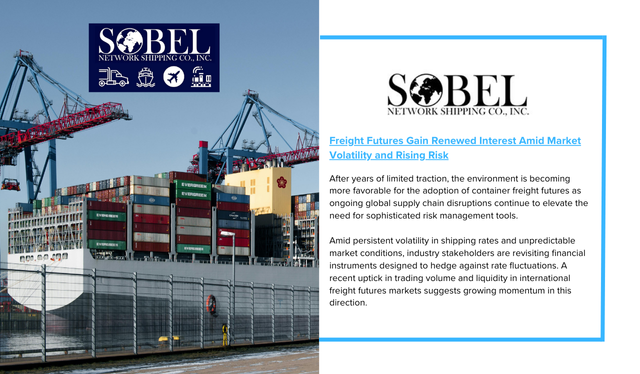After years of limited traction, the environment is becoming more favorable for the adoption of container freight futures as ongoing global supply chain disruptions continue to elevate the need for sophisticated risk management tools.
Amid persistent volatility in shipping rates and unpredictable market conditions, industry stakeholders are revisiting financial instruments designed to hedge against rate fluctuations. A recent uptick in trading volume and liquidity in international freight futures markets suggests growing momentum in this direction.
One major development in recent years has been the successful launch of a futures market in Asia, where trading activity has already surpassed the value of the underlying spot freight market by several multiples. Interestingly, much of this volume has been driven by speculative investors rather than shipping companies or cargo owners — a trend that could shift as the industry continues to evolve.
Companies with large shipping needs are increasingly exploring index-linked contracts to reduce rate-related stress in commercial agreements. These contracts help align freight prices more closely with market conditions, offering some protection against extreme cost variations. As confidence in these tools grows, extending risk management strategies to include futures or other derivatives becomes a logical next step.
This marks a significant shift in perspective. Freight is now being considered alongside traditional financial risks such as interest rates, currency fluctuations, and commodity prices. While this type of thinking isn’t yet widespread, there’s growing recognition that shipping costs should be actively managed rather than accepted as unpredictable overhead.
Historically, attempts to create a container freight futures market faced challenges due to the unique nature of shipping. Despite similarities to commodity markets, the essential nature of transportation — particularly during crises like the COVID-19 pandemic — meant that demand persisted regardless of cost, making traditional commodity-based models difficult to apply.
However, the launch of new indexes based on verifiable, shipment-level data has made freight futures more practical and potentially appealing. These new indexes are paving the way for more accurate and tradable derivatives, offering a stronger foundation for hedging strategies.
In parallel, efforts are underway to develop additional freight derivative markets in other global regions, with new indexes and trading platforms set to launch soon. These innovations could enable financial institutions to offer a broader range of hedging instruments — including swaps, options, and other derivatives — to support companies seeking greater cost predictability in freight.
Still, broad adoption remains a work in progress. The key challenge continues to be attracting active participation from industry players rather than just financial traders. While some progress has been made in certain regions, many global shippers, logistics providers, and cargo owners remain on the sidelines.
That said, the pressure to manage unpredictable costs and disruptions is pushing businesses to explore new tools. Index-linked contracts, while helpful, expose companies to unexpected price surges — which can impact budgeting, financial planning, and investor expectations.
In this context, container freight futures offer a compelling solution. As the industry moves toward more dynamic pricing models and greater transparency, it may be time for financial decision-makers to take a closer look at these instruments as part of a broader risk management strategy.


